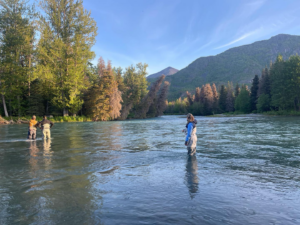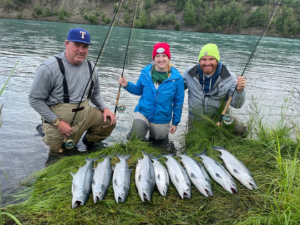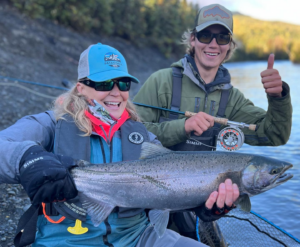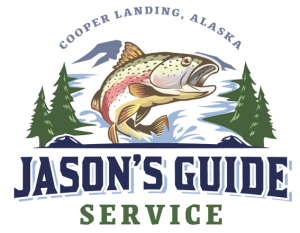I thoroughly enjoy discussing with people how to have a great day on the Kenai River on a guided fishing trip with Jason’s Guide Service. We get calls and emails asking about many of the logistics that go into the perfect day on the water. Then there is that one frequently asked question of our Anchorage, AK sockeye salmon fishing guide relating to post-trip planning. “How do I get my catch home?”
Let me tell you about the Jason’s Guide Service program; we are located in Cooper Landing, but we fish the entire Kenair River. We only keep salmon that we catch, not rainbow trout or Dolly Varden char. When we fish for salmon and have fish on the stringer, your fishing guide will fillet your salmon on the river at the end of the day or before we switch gears and start fishing for rainbows and Dollies. Your guide can also share the science behind salmon migration patterns so you can understand where your fish came from.
When the day is done and we drop you off back at the starting point of your trip we recommend the best vac-packing operation in Cooper Landing, or the area you are staying at. Once you have your fish vacuum packed, that is when you start looking at your shipping options.
You have to decide if you will pay to have your fish frozen and stored at the processing operation or just have it vac-packed so you can freeze it where you are staying. The next question is; how do I get my salmon home? The easiest two ways to get this done is to either arrange a shipment with FedEx through the processor or bring your fish home as luggage in a cooler or freezer box.
The most convenient way is to ship it. The most affordable way is to bring it home as luggage. The average cost of a cooler or fish box is 25 to 30 dollars and then you pay a price-per-pound to ship. The airline prices for extra luggage changes yearly. You can find this information with a visit to a web site or a few phone calls.
We recommend doing what is most convenient for you so you can have the best possible experience after your guided fishing trip. AND always keep a fillet or two that is unfrozen for yourself before you freeze and transport the rest of your fish. Cook that up right away because it’s a well-known fact that salmon always tastes better fresh.
Another great tip is to label your vacuum-sealed fish with the date and type of salmon before freezing. This makes it easier to keep track of your catch and ensures you enjoy the freshest fish first. If you’re bringing your fish home as luggage, consider using a high-quality insulated fish box with gel packs or dry ice to maintain the cold temperature during travel.
If you plan to ship your fish, check with your local FedEx or shipping provider about transit times and costs. Overnight or two-day shipping for fish is ideal to keep the salmon in top condition. Additionally, some fish processors offer insulated shipping boxes, which can be a worthwhile investment for safe transport.
Lastly, if you’re planning on sharing your catch with friends or family, consider portioning it out before freezing or shipping. This way, you can easily hand out manageable servings without having to thaw an entire fillet at once. No matter how you transport your fish, taking a little extra care in preparation ensures you’ll enjoy your Kenai River salmon at its best, long after your trip is over. If you’re ready to book your trip, contact Jason’s Guide Service today; we have over 31 years of experience to share with you!

















